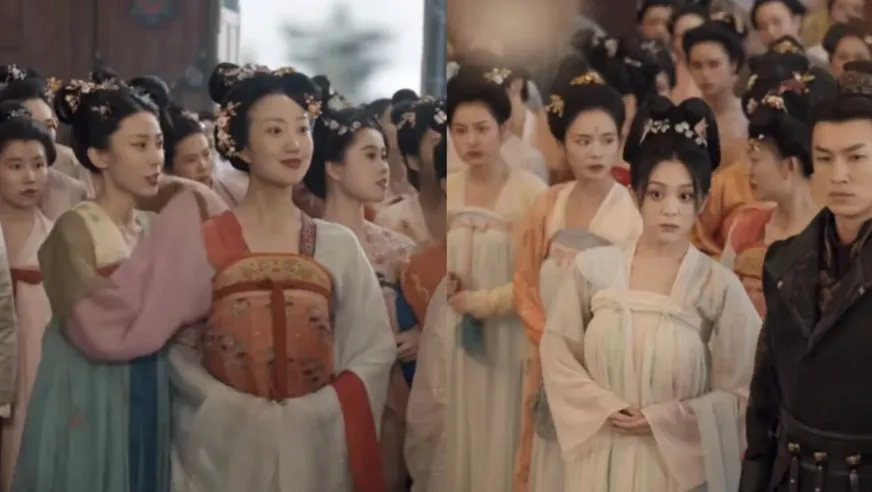When observing Tang Dynasty paintings, it's hard not to notice the low-cut necklines of women's dresses, some even revealing enough to make modern viewers blush. This fashion trend was widespread throughout the Tang era. What caused this phenomenon? The answer lies in a combination of factors, including economic prosperity, increased female confidence during Empress Wu Zetian's reign, and cultural exchanges with minority groups (such as the adoption of Hu clothing styles). However, climate played an equally crucial role.

Renowned meteorologist Zhu Kezhen, in his study "Preliminary Research on Climate Change in China Over the Last 5,000 Years," noted that the Tang Dynasty experienced a warm period. The capital, Chang'an (modern-day Xi'an), located at a latitude similar to present-day Nanjing, endured sweltering summers with average annual temperatures exceeding 20°C. Even emperors sought refuge in cooler northern regions, and bestowing ice upon officials became a prized reward. This climate directly influenced Tang fashion, leading to the popularity of round-neck, U-neck, and cross-collar designs, as well as short sleeves and lightweight silk fabrics.
From early to high Tang periods, low-cut dresses with necklines plunging to the chest—often seen in blush-inducing murals—became fashionable. Poets like Bai Juyi (Feet scorched by steaming earth, backs burned by blazing skies) and Wang Wei (Chang'an's inns boil like cauldrons) vividly captured the heat.
However, this warm period lasted only about a century. By the mid-to-late Tang Dynasty and the Five Dynasties period (around the 8th century), temperatures began to drop, and women's necklines returned to more modest heights. Layered sleeves and reduced skin exposure became the norm.
Interestingly, this mirrors our recent article on how Ming Dynasty clothing adapted to the Little Ice Age. The contrast between Tang's "open" fashion and Ming's "conservative" styles—lightweight silks versus thicker satins—reflects how ancient people adapted their attire to environmental changes.
Clothing, as a reflection of life, offers us a diverse array of Hanfu styles today. Fashion isn't just about trends; it's a spontaneous response to living conditions. This historical insight prompts us to reconsider our own seasonal choices: Why do we prefer round necks in summer and high collars in winter? Our ancestors had already figured it out.
If you're still wondering why, perhaps it's time to revisit this article—and don't forget to like it!






❤️